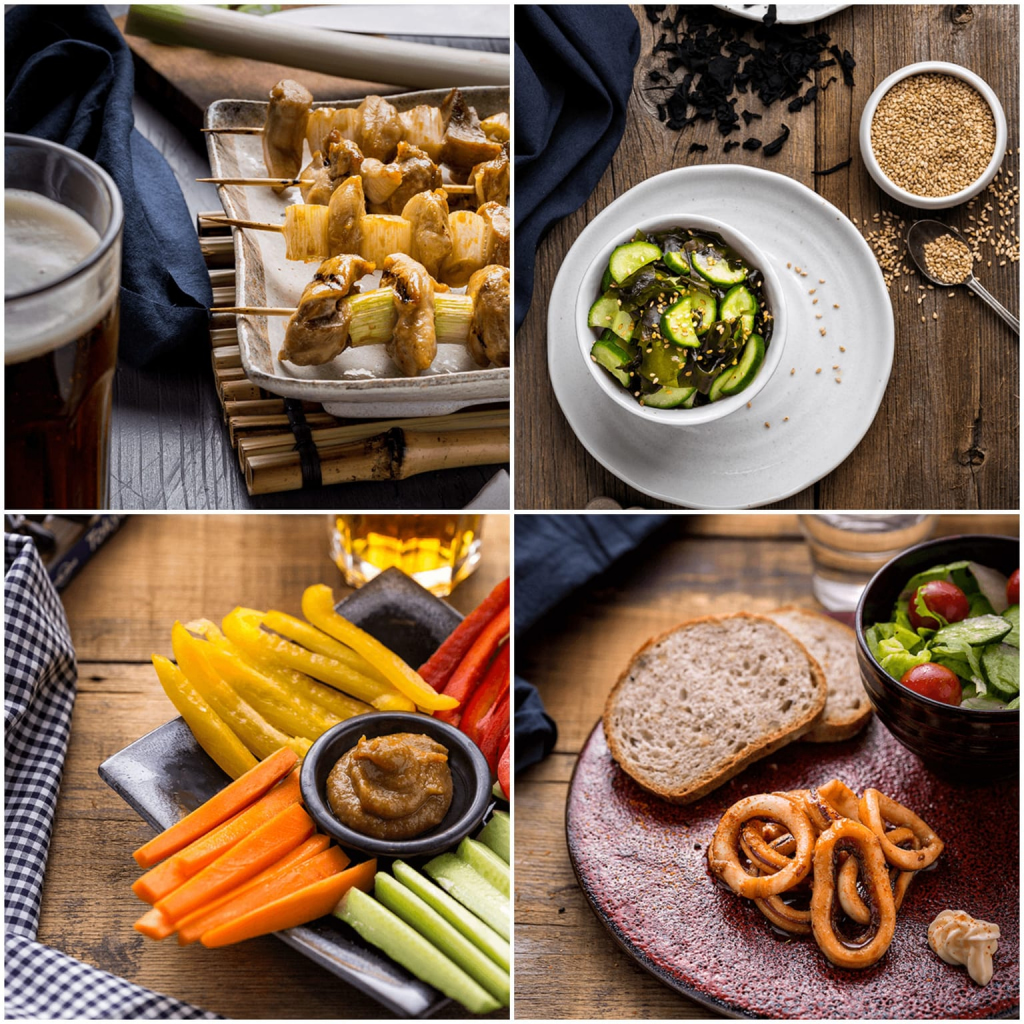The smell of freshly grilled yakitori, the loud crowds, the last-minute round of drinks before catching the train back home… There are days when those now nostalgic city scenes from Japan are suddenly transforming into a serious food (and ambiance) craving that crawls into your brain and makes you want to turn back time. But you can’t — and you also know that going to an izakaya now is not an option either. But what you can do, despite all odds, is bring the izakaya taste home and create your own #stayhome dinner.
Here are four simple traditional recipes to start with!
1. Ikayaki
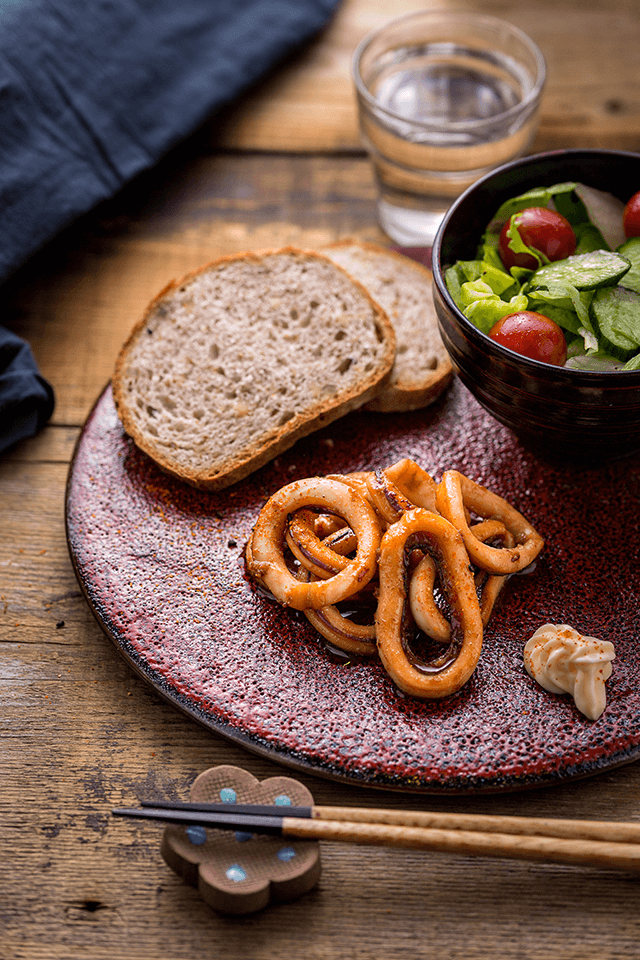
Ikayaki – grilled squid in sweet sauce – is a traditional summer street dish that you can easily recreate at home. In the original version, the squid is grilled whole, with only diagonal cuts in the flesh, but it’s easier to eat if cut into rings.
Ingredients (for 4):
- 500g of fresh or frozen squid
- 1 tbsp sake or white wine
- 2 tablespoons of vegetable oil for frying
Marinade:
- 2 tbsp soy sauce
- 1 tbsp sake
- 1 tbsp sugar
- 1 tbsp mirin
- ½ tsp grated ginger
- ½ tsp grated garlic
For serving:
Mayonnaise
Shichimi (Japanese spices)
Method:
1. If you’re using a whole squid, clean it, discarding entrails, head and the purplish outside membrane. Keep the squid body and tentacles, and rinse under running water. Cut the body into even, approx. 1cm rings and the tentacles into bite-size pieces. If you’re using frozen squid tubes or rings, defrost them first.
2. Mix all the marinade ingredients and marinate the squid for approx. 10 min. Rub off the marinade and save for later.
3. Heat oil in a pan at medium heat. Add the squid and stir-fry until golden (approximately 2 minutes), stirring often.
4. Lower the heat, add sake, cover the pan and let the squid steam on low heat for a further 2 minutes.
5. Once the squid is cooked through, add the marinade and cook, stirring constantly, until it starts to thicken (approximately 2 minutes).
6. Serve immediately.
A hint: Be careful not to over-cook the squid or else it will become rubbery.
Recipe courtesy by Kohei Yagi, Japanese food consultant and author of a Polish-speaking blog on Japanese cooking
2. Crunchy Vegetables with Miso Dip
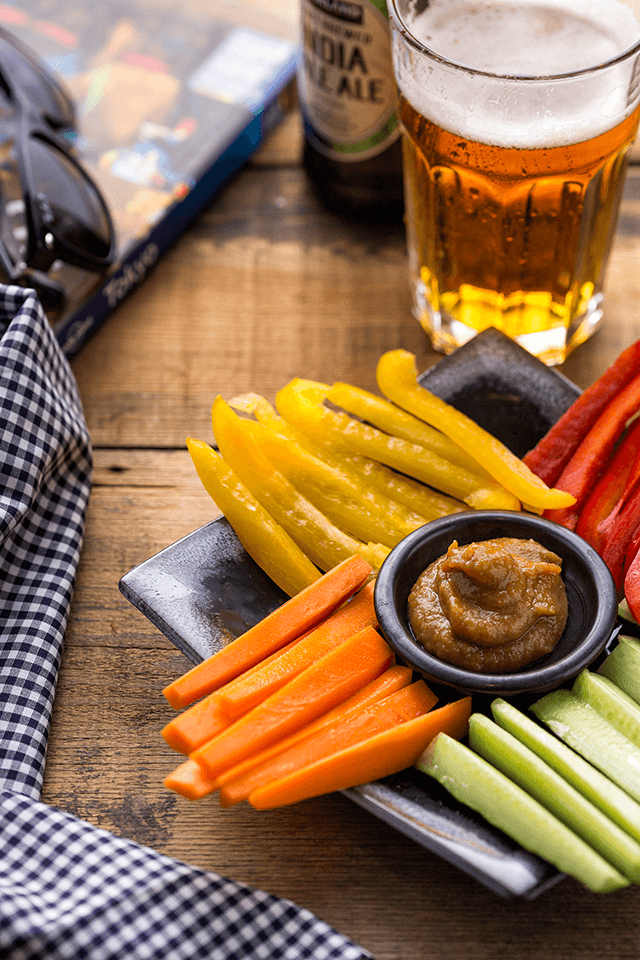 This dip is a quick way to turn fresh vegetables into a lovely snack, and a versatile condiment for numerous other dishes, too.
This dip is a quick way to turn fresh vegetables into a lovely snack, and a versatile condiment for numerous other dishes, too.
Ingredients:
- 100g miso (ideally with grains of rice or barley)
- 1 tbsp sugar
- 1 tbsp sake
- 2 tbsp mirin
- Vegetables: a selection of crispy fresh vegetables such as cucumber, carrot, radish, and celery, cut into sticks.
Method:
1. Heat the pan and add sugar, sake, mirin and miso. Simmer for a few minutes, stirring constantly with a spatula, to make a thick dip.
2. Let the mixture cool down, then serve together with the vegetables.
3. Any leftovers can be put in a plastic container and preserved for up to a month in the fridge.
A hint:
The dip can also be used in many other ways:
• Miso yaki: a marinade for fish or pork. Spread the dip onto the fish or pork, let marinate for a couple of hours and grill.
• Miso dare: a base for stir fried vegetables and meat. Simply add a bit more sake to make the dip smooth and use it in a stir fry.
• Miso mayo: mix the dip with mayonnaise (ratio 1:3) and serve with any crispy vegetables.
Recipe courtesy by Atsuko Ikeda, founder of “Atsuko’s Kitchen” Japanese cooking classes in London
3. Sunomono Salad with Cucumber and Wakame
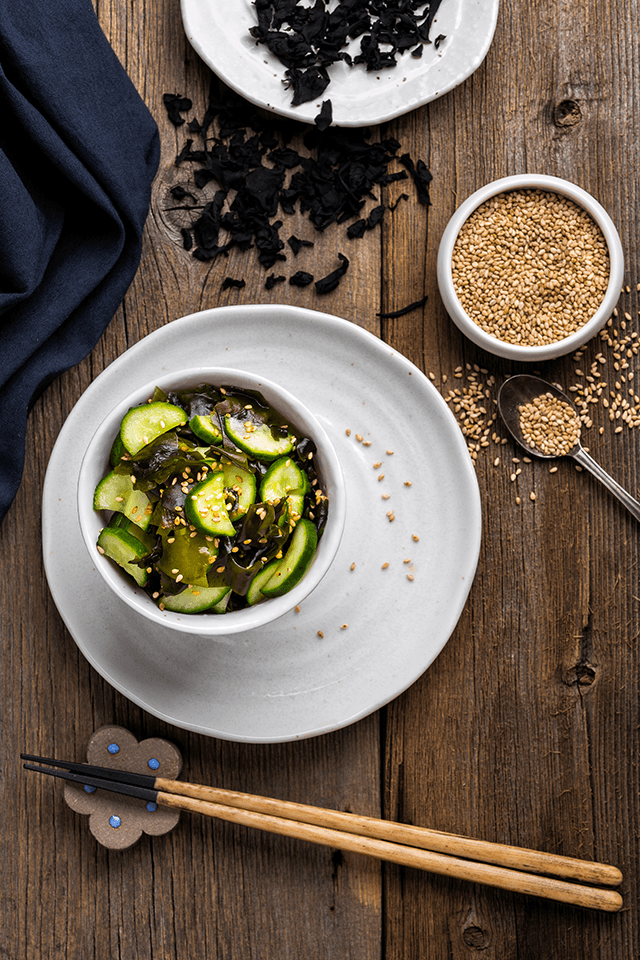
Sunomono (literally “vinegary dish”), is a very popular side dish in Japan. Its clean and refreshing flavor makes it a perfect side dish with summer grills. It’s oil-free so you don’t need to worry about calories, and you get all the nutritional goodness from the wakame seaweed, which is packed with vitamins and minerals from the sea.
Ingredients (for 4):
- 300g cucumber
- 10g dried wakame seaweed
- 2 tbsp salt
- 4 tbsp rice vinegar
- 2 tbsp sugar
- 2 tbsp parched white sesame
Method:
1. Soak the dried wakame seaweed in a bowl of cold water until it softens, for about 10 minutes. Drain and squeeze out excess water.
2. Cut the cucumbers in half lengthwise and slice thinly. Place the cucumber slices in a bowl, sprinkle with salt and massage gently. Set aside for a few minutes. Wash out the salt and squeeze out excess water.
3. Place the vinegar and the sugar in a bowl. Mix well until the sugar is dissolved. Add the wakame, cucumber and sesame. Mix well and serve.
Recipe courtesy by food writer Yukari Elliott
4. Yakitori
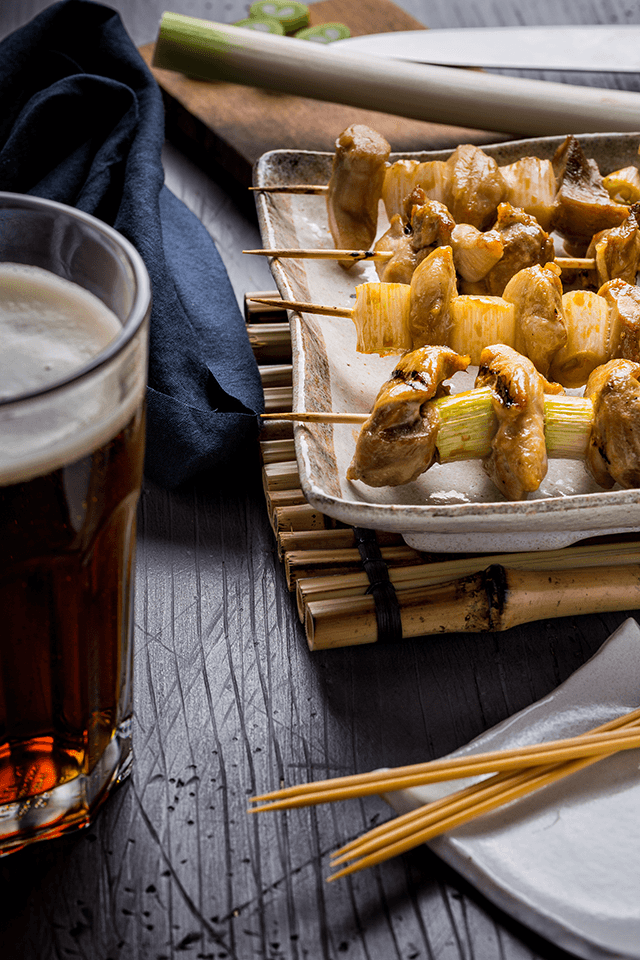
No izakaya experience would be complete without yakitori, which is chicken cooked on skewers with a sweet tare sauce or simply with salt (shio). With this simple recipe, you will be able make sweet yakitori even without setting up your barbeque.
Ingredients (for 6 skewers):
- 200g chicken thighs – without bones
- 1 leek (white part only)
- Wooden/ bamboo skewers
Sauce:
- 100ml soy sauce
- 50ml mirin
- 1 tbsp sake or white wine
- 1 tbsp brown sugar
- 1 small garlic clove, crushed
Method:
1. Soak skewers in water for at least 10 minutes, so that they don’t burn during grilling.
2. Cut chicken into roughly 3cm x 3cm pieces.
3. Cut leek into approximately 1 cm slices.
4. Thread the chicken and leek pieces alternately on the skewers.
5. Mix and heat all the sauce ingredients. Remove from heat once boiling.
6. Grill the chicken for 6-8 minutes on each side, either on a grill or in a grill pan.
7. When both sides are grilled until brown, brush the skewers with the sauce and grill for a further 1-2 min (don’t grill for too long because the meat will get tough).
8. Serve immediately.
Recipe courtesy of Kohei Yagi
This article is based on a chapter from Anna Jassem and Aleksander Szojer’s book, In the Rhythm of the Seasons: Japanese Customs and Home Recipes. Words by Anna Jassem and Aleksander Szojer. Photos by Wiktor Staniecki. The article was original published in August 2017 and updated on April 21, 2020.

